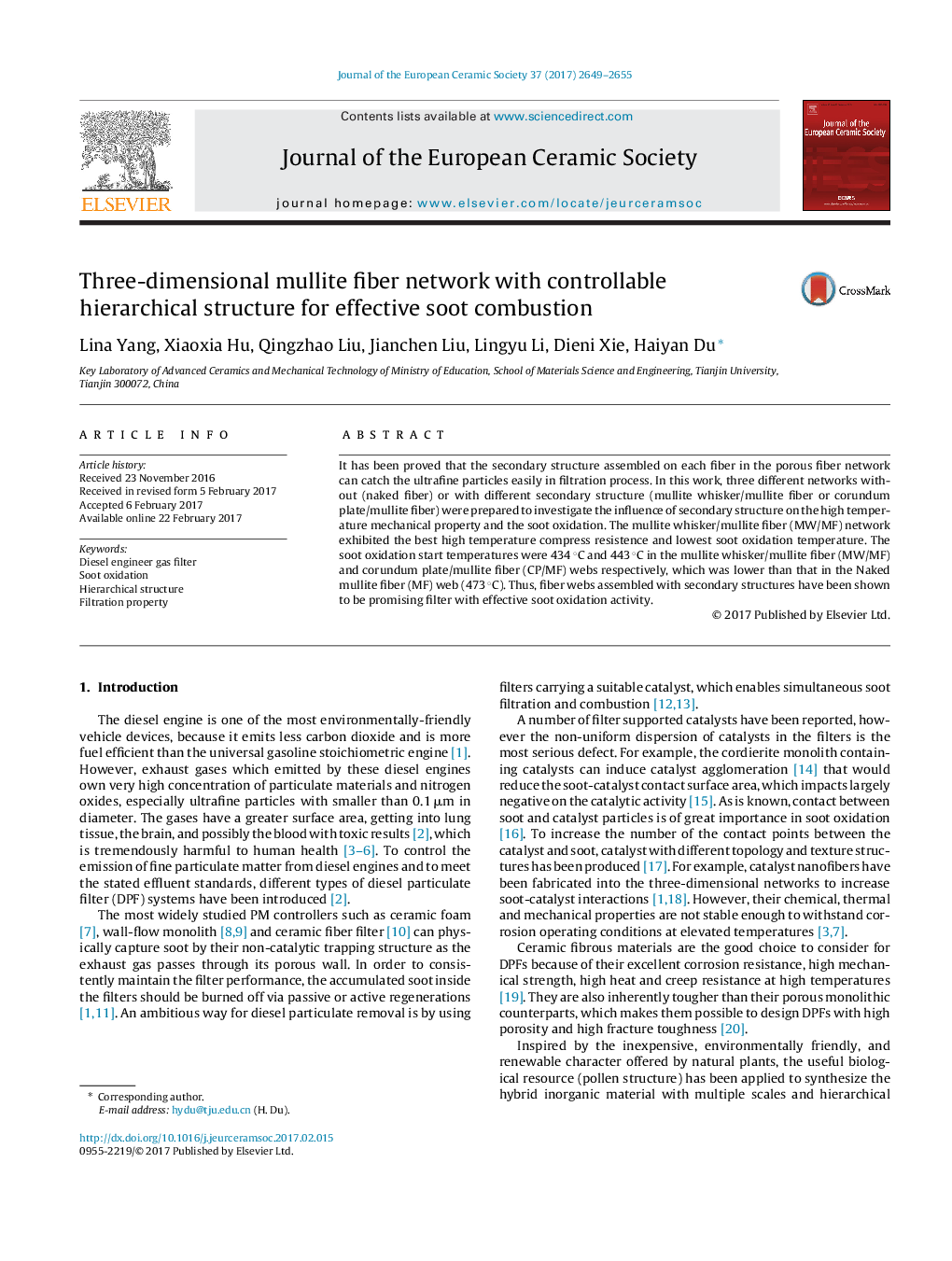| Article ID | Journal | Published Year | Pages | File Type |
|---|---|---|---|---|
| 5440757 | Journal of the European Ceramic Society | 2017 | 7 Pages |
It has been proved that the secondary structure assembled on each fiber in the porous fiber network can catch the ultrafine particles easily in filtration process. In this work, three different networks without (naked fiber) or with different secondary structure (mullite whisker/mullite fiber or corundum plate/mullite fiber) were prepared to investigate the influence of secondary structure on the high temperature mechanical property and the soot oxidation. The mullite whisker/mullite fiber (MW/MF) network exhibited the best high temperature compress resistence and lowest soot oxidation temperature. The soot oxidation start temperatures were 434 °C and 443 °C in the mullite whisker/mullite fiber (MW/MF) and corundum plate/mullite fiber (CP/MF) webs respectively, which was lower than that in the Naked mullite fiber (MF) web (473 °C). Thus, fiber webs assembled with secondary structures have been shown to be promising filter with effective soot oxidation activity.
